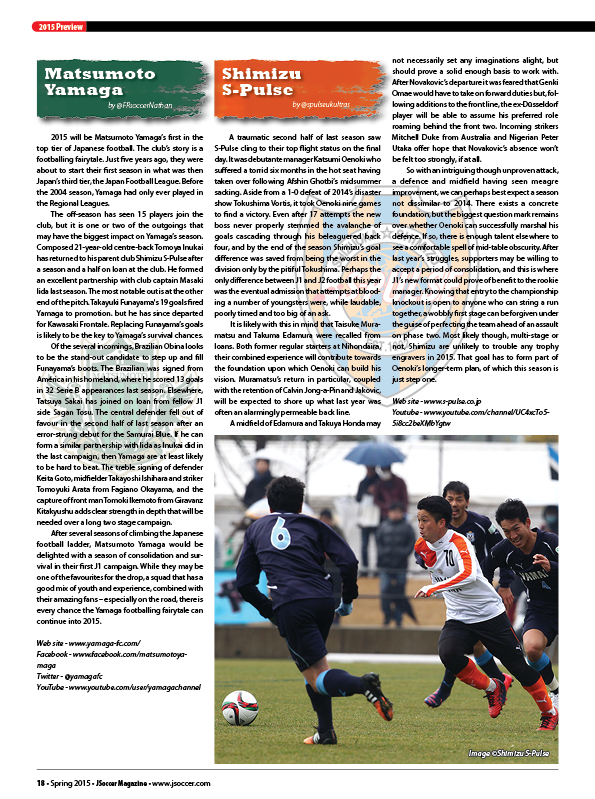by @spulseukultras
A traumatic second half of last season saw Shimizu S-Pulse cling to their continuing top flight status only on the final day. It was debutante manager Katsumi Oenoki who suffered a torrid six months in the hot seat having taken over following Afshin Ghotbi’s midsummer sacking.
Aside from a 1-0 defeat of 2014’s disaster show Tokushima Vortis, it took Oenoki nine games to find a victory. Even after 17 attempts the new boss never properly stemmed the avalanche of goals cascading through his beleaguered back four, and by the end of the season Shimizu’s goal difference was saved from being the worst in the division only by the pitiful Tokushima.
Perhaps the only difference between J1 and J2 football this year was the eventual admission that attempts at blooding a number of youngsters were, while laudable, poorly timed and too big of an ask. It is likely with this in mind that Taisuke Muramatsu and Takuma Edamura were recalled from loans. Both former regular starters at Nihondaira, their combined experience will contribute towards the foundation upon which Oenoki can build his vision. Muramatsu’s return in particular, coupled with the retention of Calvin Jong-a-Pin and Jakovic, will be expected to shore up what last year was often an alarmingly permeable back line.
A midfield of Edamura and Takuya Honda may not necessarily set any imaginations alight, but should prove a solid enough basis to work with.
After Novakovic’s departure it was feared that Genki Omae would have to take on forward duties but, following additions to the front line, the ex-Dusseldorf player will be able to assume his preferred role roaming behind the front two. Incoming strikers Mitchell Duke from Australia and Nigerian Peter Utaka offer hope that Novakovic’s absence won’t be felt too strongly, if at all.
So with an intriguing though unproven attack, a defence and midfield having seen meagre improvement, we can perhaps best expect a season not dissimilar to 2014. There exists a concrete foundation, but the biggest question mark remains over whether Oenoki can successfully marshal his defence. If so, there is enough talent elsewhere to see a comfortable spell of mid-table obscurity. After last year’s struggles, supporters may be willing to accept a period of consolidation, and this is where J1’s new format could prove of benefit to the rookie manager. Knowing that entry to the championship knockout is open to anyone who can string a run
together, a wobbly first stage can be forgiven under the guise of perfecting the team ahead of an assault on phase two. Most likely though, multi-stage or not, Shimizu are unlikely to trouble any trophy engravers in 2015. That goal has to form part of Oenoki’s longer-term plan, of which this season is just step one.
